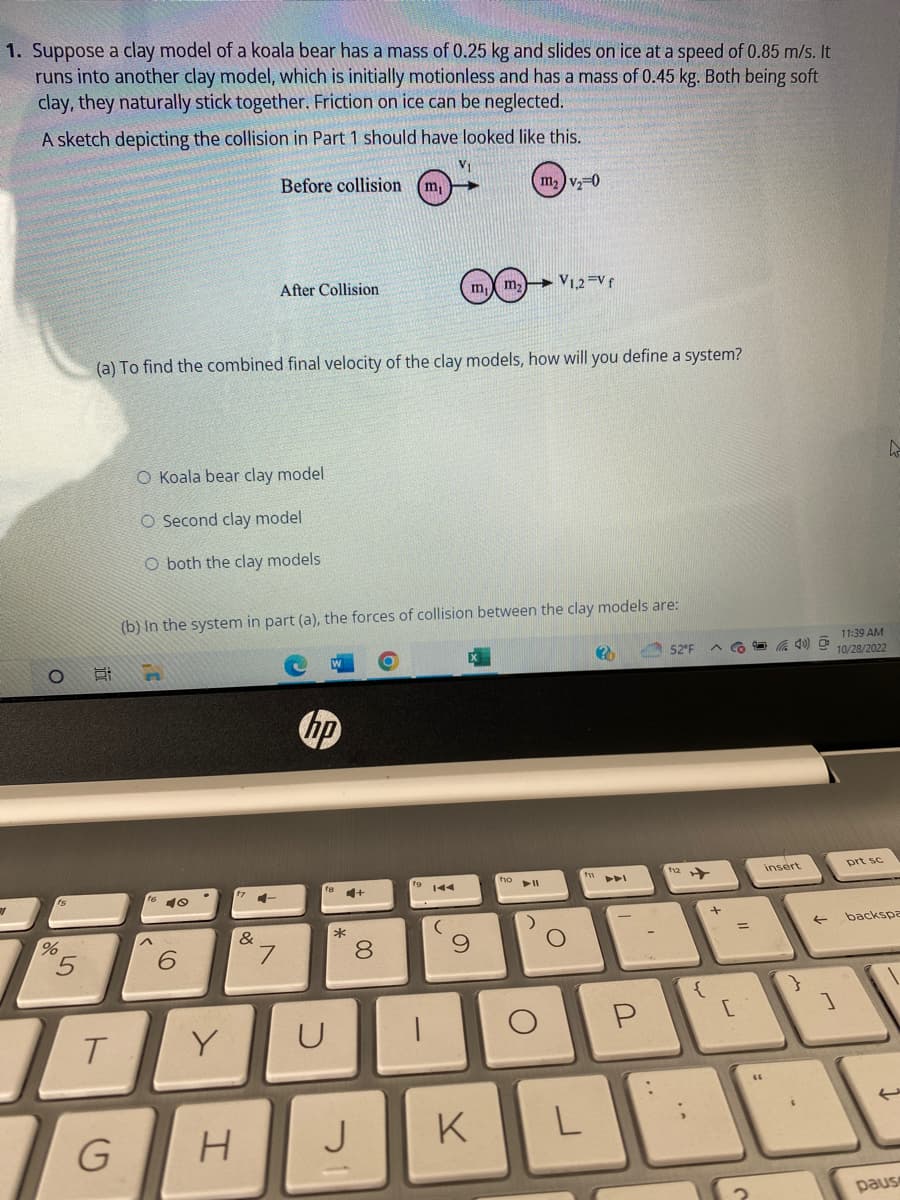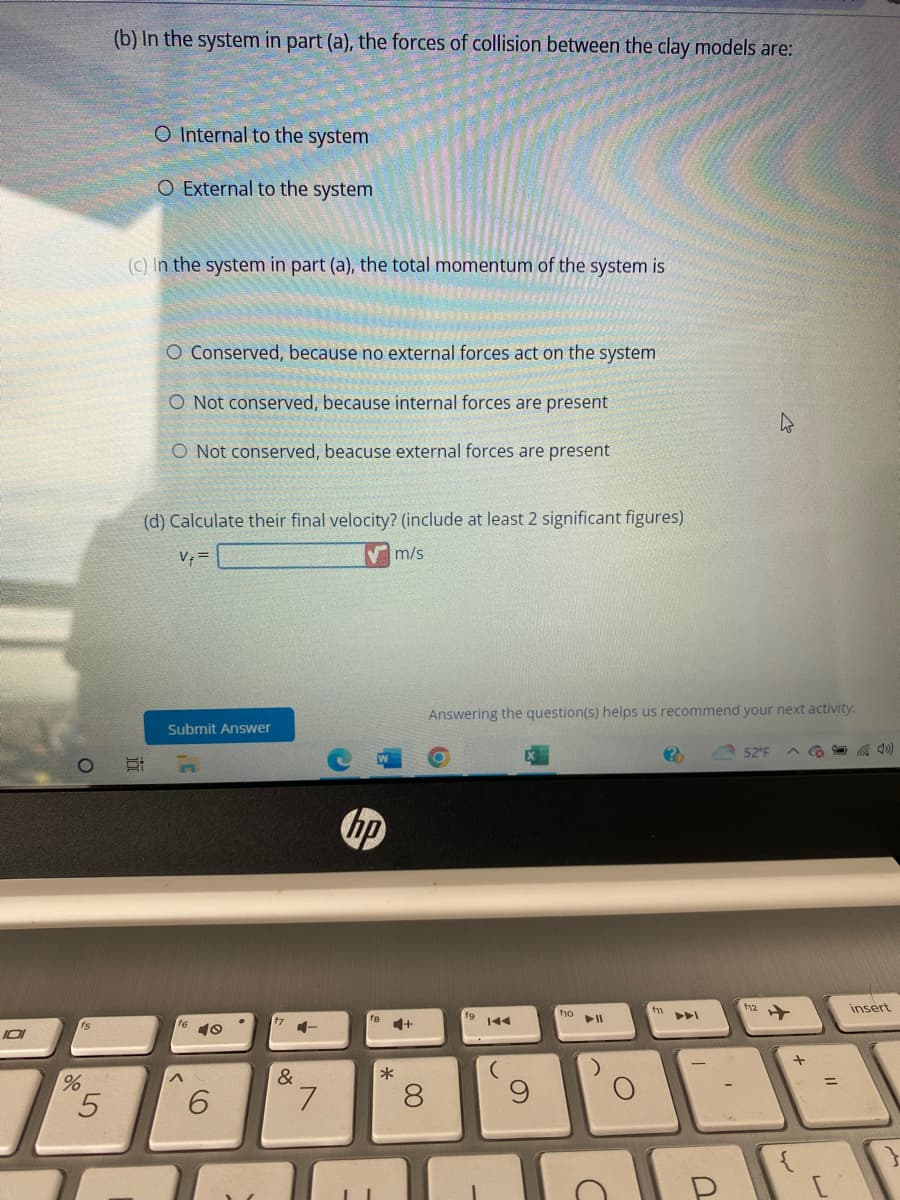1. Suppose a clay model of a koala bear has a mass of 0.25 kg and slides on ice at a speed of 0.85 m/s. It runs into another clay model, which is initially motionless and has a mass of 0.45 kg. Both being soft clay, they naturally stick together. Friction on ice can be neglected. A sketch depicting the collision in Part 1 should have looked like this. m₂) v₂-0 Before collision After Collision m₁ O Koala bear clay model O Second clay model O both the clay models m₁ m₂ V1,2 Vf (a) To find the combined final velocity of the clay models, how will you define a system? (b) In the system in part (a), the forces of collision between the clay models are: del 11:39 AM
1. Suppose a clay model of a koala bear has a mass of 0.25 kg and slides on ice at a speed of 0.85 m/s. It runs into another clay model, which is initially motionless and has a mass of 0.45 kg. Both being soft clay, they naturally stick together. Friction on ice can be neglected. A sketch depicting the collision in Part 1 should have looked like this. m₂) v₂-0 Before collision After Collision m₁ O Koala bear clay model O Second clay model O both the clay models m₁ m₂ V1,2 Vf (a) To find the combined final velocity of the clay models, how will you define a system? (b) In the system in part (a), the forces of collision between the clay models are: del 11:39 AM
Related questions
Question

Transcribed Image Text:1. Suppose a clay model of a koala bear has a mass of 0.25 kg and slides on ice at a speed of 0.85 m/s. It
runs into another clay model, which is initially motionless and has a mass of 0.45 kg. Both being soft
clay, they naturally stick together. Friction on ice can be neglected.
A sketch depicting the collision in Part 1 should have looked like this.
V₁
Before collision
O
%
5
I
T
G
O Koala bear clay model
O Second clay model
O both the clay models
(a) To find the combined final velocity of the clay models, how will you define a system?
16 40
H
After Collision
17 4-
&
(b) In the system in part (a), the forces of collision between the clay models are:
7
hp
U
*
m₁
00
8
m₁ m₂
T
9
m₂ v₂ 0
J K
V1,2 V f
O
?
11 I
-
P
52°F
{
+
Co 940) O
[
=
insert
}
11:39 AM
10/28/2022
1
prt sc
4
backspa
1
pause

Transcribed Image Text:101
%
5
(b) In the system in part (a), the forces of collision between the clay models are:
O Internal to the system
O External to the system
(c) In the system in part (a), the total momentum of the system is
O Conserved, because no external forces act on the system
O Not conserved, because internal forces are present
O Not conserved, beacuse external forces are present
(d) Calculate their final velocity? (include at least 2 significant figures)
V₁ =
m/s
Submit Answer
^
6
&
4-
7
hp
4+
*
8
Answering the question(s) helps us recommend your next activity.
(
f10
C
f1
?
PPI
U
52°F
f12
+
insert
Expert Solution
This question has been solved!
Explore an expertly crafted, step-by-step solution for a thorough understanding of key concepts.
This is a popular solution!
Trending now
This is a popular solution!
Step by step
Solved in 2 steps
